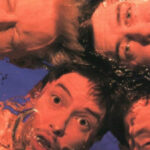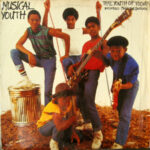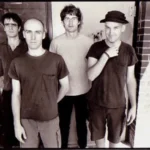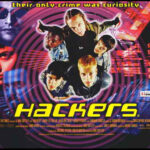 In the ever-evolving landscape of music, some bands manage to carve a unique niche, creating sounds that are ahead of their time. Flash and the Pan, the Australian duo of Harry Vanda and George Young, is one such act. Known for their distinctive blend of storytelling lyrics, innovative production, and pioneering use of synthesizers, Flash and the Pan were key contributors to the emergence of synthpop and new wave in the late 1970s and early 1980s.
In the ever-evolving landscape of music, some bands manage to carve a unique niche, creating sounds that are ahead of their time. Flash and the Pan, the Australian duo of Harry Vanda and George Young, is one such act. Known for their distinctive blend of storytelling lyrics, innovative production, and pioneering use of synthesizers, Flash and the Pan were key contributors to the emergence of synthpop and new wave in the late 1970s and early 1980s.
This article delves into the history of Flash and the Pan, exploring their origins, groundbreaking music, and enduring influence.
Beginnings: The Roots in The Easybeats
The story of Flash and the Pan begins with The Easybeats, one of Australia’s most successful rock bands of the 1960s. Formed in Sydney, The Easybeats achieved international fame with their hit “Friday on My Mind” in 1966, co-written by Harry Vanda and George Young. The two musicians forged a creative partnership that would define their careers, characterized by their knack for memorable melodies and innovative production techniques.
After The Easybeats disbanded in 1969, Vanda and Young transitioned into production work. They became key players in the Australian music scene, producing hits for acts like AC/DC (which featured George Young’s younger brothers, Malcolm and Angus Young), John Paul Young, and Stevie Wright. However, their restless creativity led them to explore new musical horizons.
The Birth of Flash and the Pan
In the mid-1970s, Vanda and Young began experimenting with studio techniques and synthesizers, inspired by the rise of electronic music and the burgeoning punk movement. These experiments laid the foundation for Flash and the Pan, a project that allowed them to push musical boundaries.
The duo’s first single, “Hey, St. Peter”, was released in 1976. The song showcased their unique approach to songwriting and production. Featuring spoken-word verses, a catchy chorus, and a futuristic soundscape, “Hey, St. Peter” was a surprise hit, reaching the top 10 in Australia and gaining traction in Europe. Its success set the stage for Flash and the Pan’s eponymous debut album, released in 1978.
The Sound of Flash and the Pan: Storytelling and Innovation
Flash and the Pan’s music stood out for its unconventional structure and cinematic quality. While many of their contemporaries followed traditional rock and pop formulas, Vanda and Young used music as a medium for storytelling. Their lyrics often featured observational narratives, dark humor, and surreal imagery, giving their songs a distinctive, almost theatrical feel.
The production was equally innovative. The duo embraced synthesizers, drum machines, and studio effects to create a sound that blended new wave, synthpop, and art rock. Their vocal delivery was unorthodox, with George Young often speaking or half-singing lyrics, processed through effects that added a robotic, detached quality.
These elements came together to create a signature style that was both futuristic and timeless.
Key Albums and Songs
Flash and the Pan (1978)
The band’s self-titled debut album solidified their reputation as musical innovators. In addition to “Hey, St. Peter,” the album featured tracks like:
- “Walking in the Rain”: A moody, minimalist song with haunting lyrics and a hypnotic rhythm, later covered by Grace Jones.
- “Down Among the Dead Men”: A darkly humorous track about a sinking ship, showcasing their knack for blending storytelling with atmospheric production.
The album was a critical and commercial success, particularly in Europe, where it resonated with audiences drawn to the emerging new wave sound.
Lights in the Night (1980)
Their second album, Lights in the Night, expanded on their experimental approach. Highlights included:
- “Media Man”: A satirical take on the media industry, driven by a pulsating beat and layered synthesizers.
- “Welcome to the Universe”: A cosmic exploration of humanity’s place in the universe, blending philosophical lyrics with expansive soundscapes.
Although it didn’t achieve the same commercial success as their debut, Lights in the Night reinforced Flash and the Pan’s reputation as avant-garde innovators.
Headlines (1982)
The duo’s third album, Headlines, marked a return to a more accessible sound while retaining their experimental edge. Standout tracks included:
- “Waiting for a Train”: A melancholic yet danceable track with a hypnotic rhythm, it became one of their biggest hits in Europe, reaching the UK Top 10.
- “Where Were You”: A nostalgic and reflective song, characterized by its atmospheric production.
Later Releases
Flash and the Pan continued to release albums throughout the 1980s and early 1990s, including Early Morning Wake Up Call (1984) and Nights in France (1987). While these albums didn’t achieve the same level of acclaim as their earlier work, they demonstrated Vanda and Young’s enduring creativity and commitment to pushing musical boundaries.
Influence and Legacy
Flash and the Pan’s music was ahead of its time, influencing a wide range of artists and genres. Their innovative use of synthesizers, drum machines, and studio effects helped pave the way for the synthpop movement of the 1980s. Bands like Depeche Mode, Soft Cell, and New Order drew on similar techniques to create their iconic sounds.
The duo’s storytelling approach and unconventional vocal delivery also inspired later acts in the new wave and post-punk genres. Artists such as Grace Jones, who covered “Walking in the Rain,” and LCD Soundsystem, whose blend of electronic and narrative elements echoes Flash and the Pan’s style, have acknowledged their influence.
Flash and the Pan’s music also found a new audience in the 21st century, with their tracks being rediscovered by younger listeners and sampled by contemporary artists. Their innovative approach continues to resonate, proving that their work remains as relevant as ever.
Vanda and Young: Beyond Flash and the Pan
While Flash and the Pan was an important chapter in their careers, Harry Vanda and George Young’s contributions to music extend far beyond the project. As producers, they played a pivotal role in shaping the sound of Australian rock, particularly through their work with AC/DC. Their production style emphasized raw energy and authenticity, qualities that defined many of the acts they worked with.
The duo’s songwriting legacy, from The Easybeats to Flash and the Pan, reflects their extraordinary versatility and enduring impact on popular music.
Conclusion: A Band Ahead of Its Time
Flash and the Pan may not have achieved the mainstream fame of some of their contemporaries, but their influence on music is undeniable. With their innovative sound, narrative-driven lyrics, and willingness to experiment, they carved out a unique place in the history of synthpop and new wave.
From the haunting “Walking in the Rain” to the infectious “Waiting for a Train,” their songs continue to captivate and inspire. Flash and the Pan’s music serves as a reminder of the power of innovation and the timeless appeal of a well-crafted melody. For those who seek to explore the roots of modern electronic music, Flash and the Pan remains an essential stop on the journey.
This post has already been read 154 times!









